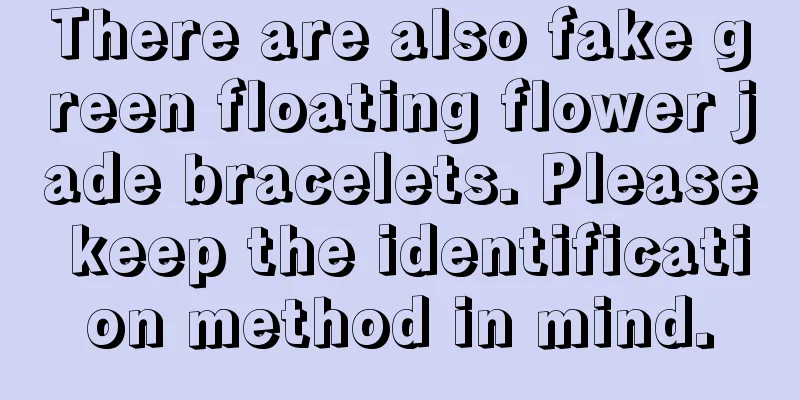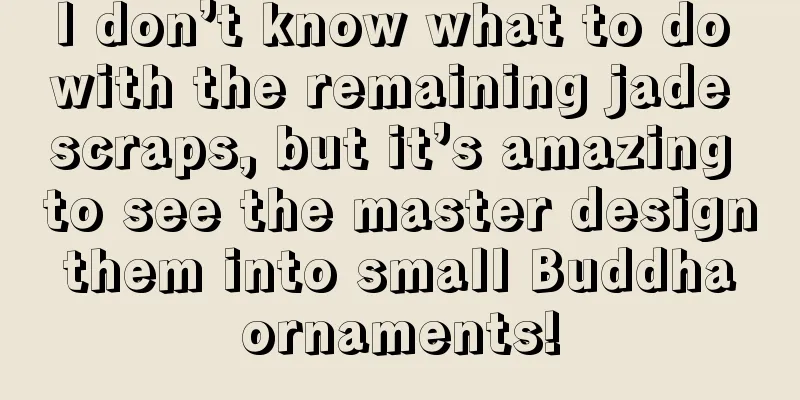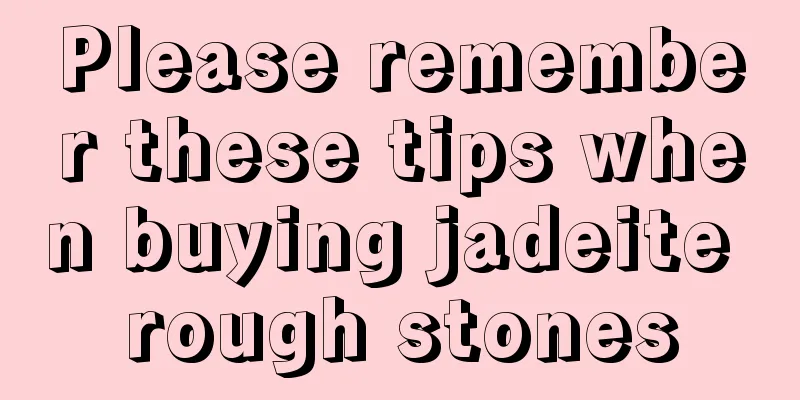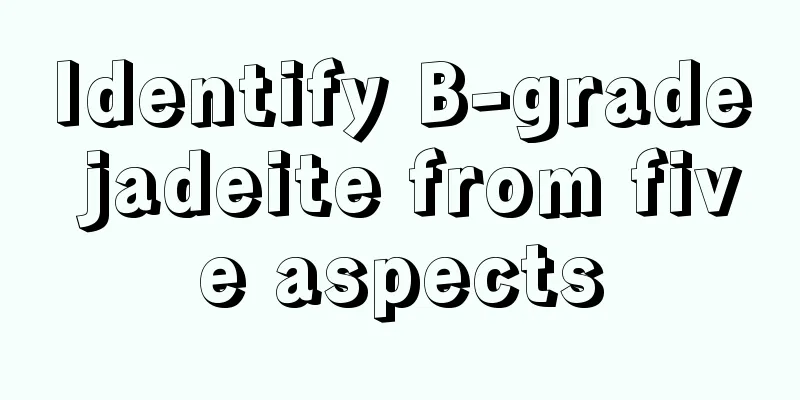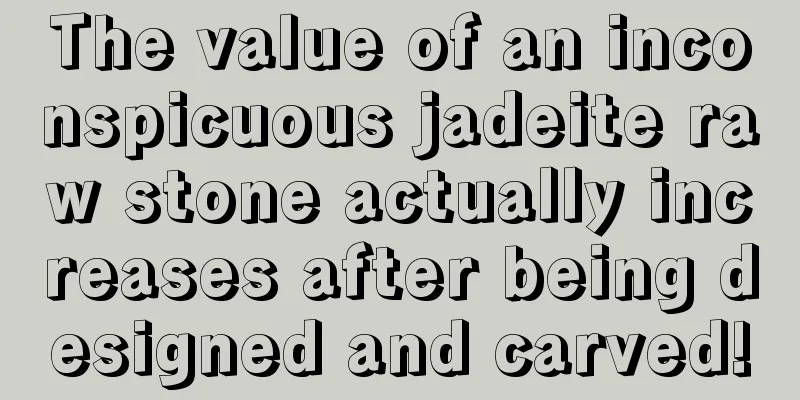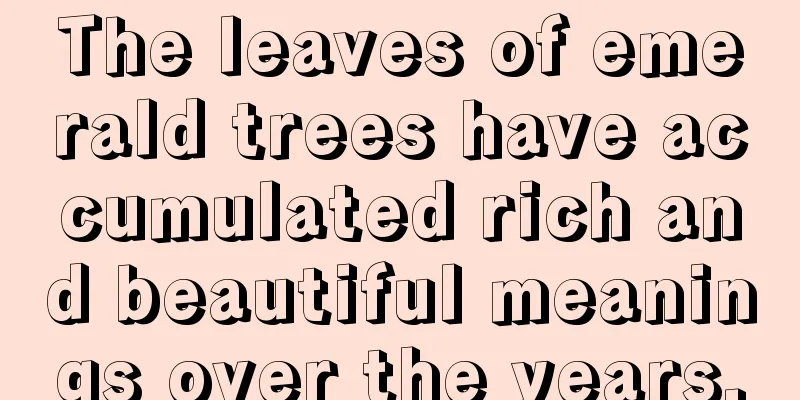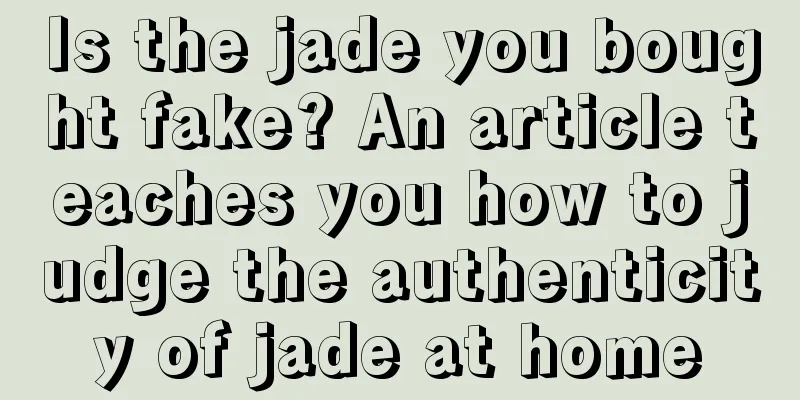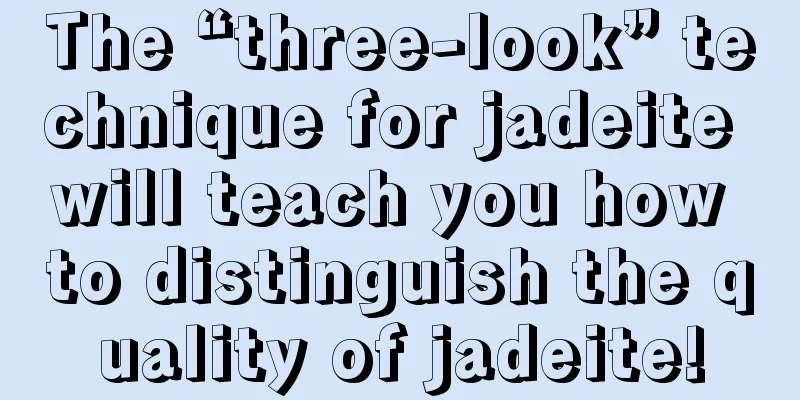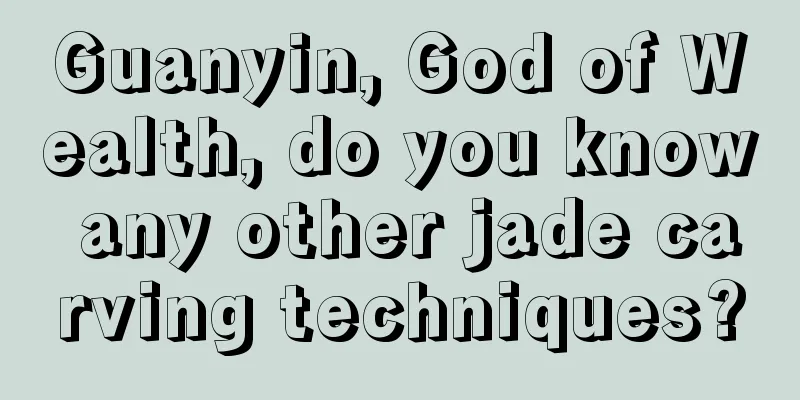Do you know the “bottom” of jadeite? Then do you know what others mean by “ground”? How much do you know?
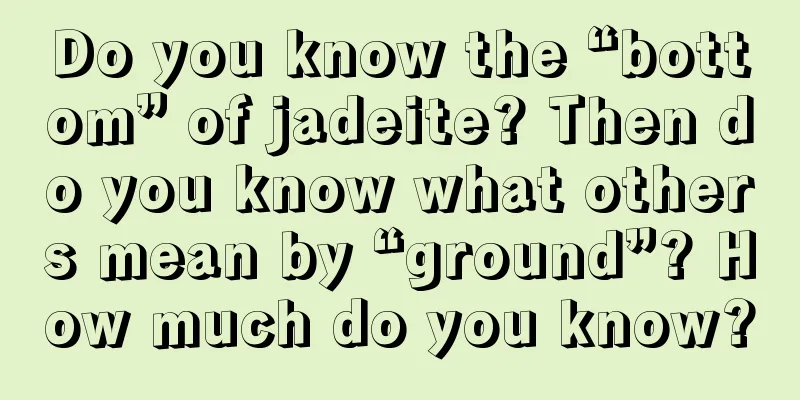
|
Every jadeite has its own ground. In a narrow sense, the ground of jadeite is also called the base, which means the base color. In southern China, it is called "ground". To put it simply, the ground of jadeite refers to the part of jadeite other than the color. In a broad sense, the ground refers to the texture of jadeite, which includes the brightness of the jade's color, transparency, density, fineness and toughness determined by its material composition and internal structure. There are several types of classification of jadeite ground: 1. What is the ground of jadeite? The ground is also called the ground sheet and the bottom. The ground is the texture that green depends on and the carrier of green distribution; it is the foundation. The ground is a combination of all factors except green. It is the quality characteristic reflected by the combination and coordination of type, water (transparency) and clarity. It reflects the structure, transparency and cleanliness of jade, and also contains the characteristics of tone and color. The quality of the ground is determined by the water quality. In addition, the number of defects such as cracks, asbestos, stone patterns, impurities, etc. also affects the quality of the ground. The anthropomorphic characteristics of the naming of the ground are more obvious. Ground is a description of the texture to which the green color of jadeite is attached. The ground is the cornerstone of green. The ground is solid, delicate, pure and transparent. When green exists on it, it will be full, emerald, crystal clear and full of aura. On the contrary, the green will appear dry and dull, lacking in agility. 2. Classification of Jade Ground 1. Glass floor. The glass floor is completely transparent and has a glassy luster. The transparency of jade is different from that of gemstones. A good glass bracelet has no impurities and looks like transparent crystal. 2. Ice ground: Ice ground is second only to glass ground. It is completely transparent like ice. There seems to be a layer of mist on the transparent surface, like pure water frozen and stagnant. 3. Water land. Transparent as water, with glassy luster. Very similar to glass, with a small amount of impurities. 4. Egg white ground. The texture is like egg white, with a glassy luster, is translucent, relatively pure and free of impurities. 5. Snotty ground. The texture is like snot, has a glassy luster, is relatively pure, and contains a small amount of impurities. 6. Clear water area. The texture is transparent but bluish green. Water-land varieties with a bluish-green color are not as good as water-land varieties due to color interference. 7. Gray water land. The texture is translucent, but grayish. Because of the gray color, the texture is worse than that of clear water. 8. Purple water land. The texture is translucent, but has a purple hue, like translucent violet. 9. Muddy water. The texture is translucent, like muddy water, and the transparency is relatively poor. 10. Fine white ground. It is translucent, sandy, white, and has an opaque fine white ground. 11. White sand. Translucent, sandy, white, with a rough, fine white texture. 12. Gray sandy land. Translucent, sandy, grey, rough grey-white sand. 13. Bean green field. Translucent, bean green base, actually a bean green base translucent variety. 14. Purple flower field. Translucent with uneven purple flowers, the color is like uneven violets. 15. Blue and white ground. It is translucent to opaque, has blue stone flowers, and has an uneven texture, making it only suitable for jade carving. 16. White flower field. It is translucent to opaque, rough in texture and has stone flowers. 17. Porcelain floor. Translucent to opaque, white in color. 18. Dry white land. It is white and opaque. 19. Rough white ground. The texture is rough and white and opaque. 20. Rough gray ground. The texture is rough and gray and opaque. 21. Shit land. It is often brown or dark brown.
fruit fcgc33 |
<<: Have you heard of old jade? What is old jade? What are the criteria for identifying old jadeite?
>>: Why is the price of ice jadeite raw stone so expensive? What makes it so expensive specifically?
Recommend
For jade pendants of the same quality, what is the difference between double-sided carving and single-sided carving?
There are many jade pendants on the jade market, ...
5 Very Unreliable Jade Identification Methods
Jade is not only a wearable jewellery but also a ...
Glass Jadeite Standing at the Top of the Jadeite Pyramid
When it comes to jadeite, those who know the busi...
Purple jade is so beautiful! ! !
When thinking of spring, many people’s first impr...
Detailed analysis of how to cut jadeite raw stones to maximize profits
How to realize the maximum economic value of a pi...
Appreciation | The Five Beauties of Jade
Jade is a product that takes billions of years to...
Are jade brooches all made from scraps? So why is the value so high?
People with good taste know how important an exqu...
When collecting jade pendants, the craftsmanship of jade is more important than its color!
Although the jadeite collection market has not be...
The cause of Teresa Teng’s death was revealed more than 20 years later? Unfortunately, the only thing that accompanied her in the end was a jade bracelet!
Teresa Teng , the most influential singer in the ...
Looking at the carving process of top-grade jadeite rough material, every step is thrilling
There is a saying in the jade industry: "Goo...
There are 7 major levels of jade flaws, which one can you tolerate?
The first step to falling in love with jade is to...
A piece of tri-color jadeite scrap, after being sculpted by a jade carver, finally transformed into a gorgeous
This is the scrap left after taking the bracelet....
How to choose a jade necklace? What kind of jade necklace is good?
The jade necklace is crystal clear, warm and plea...
Who says "carvings are not valuable"? If you understand these 3 points, you will definitely get your money's worth!
From the perspective of craftsmanship, jade can b...
Is the black in jade really black?
If green is the most popular color of jade, then ...
